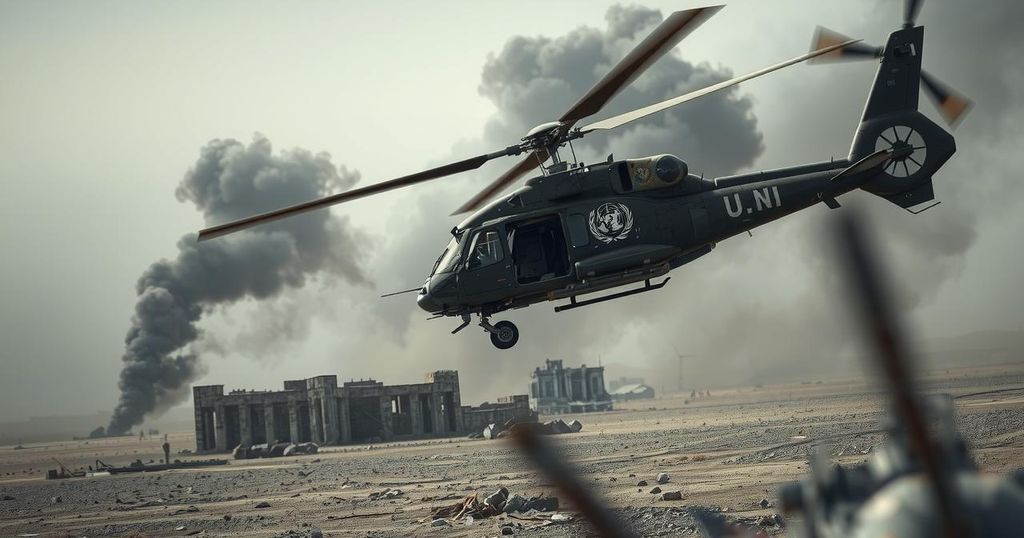A U.N. helicopter was attacked in South Sudan while rescuing injured soldiers, resulting in one crew member’s death and two injuries. President Kiir called for calm as tensions rise, with critics pointing to leadership failures amid fears of renewed civil conflict. A power-sharing deal between Kiir and Riek Machar is at risk, complicating the already volatile situation.
A United Nations helicopter was attacked while carrying out a rescue mission for injured soldiers in Upper Nile State, South Sudan. This incident resulted in the death of one crew member and injuries to two others. The attack was attributed to gunmen, specifically from a group known as the White Army, who opened fire as the crew attempted to evacuate the soldiers affected by recent clashes.
The attack occurs against a backdrop of intensifying political tensions in South Sudan, raising concerns of a potential resurgence of civil conflict. President Salva Kiir urged for calm, asserting that the government would manage the crisis and imploring citizens to refrain from taking justice into their own hands. Nevertheless, critics argue that both Mr. Kiir and rival leaders are partly to blame for the ongoing turmoil.
In 2018, a power-sharing agreement between President Kiir and First Vice President Riek Machar aimed at ending a devastating civil war. However, this agreement now appears to be failing, as violent confrontations have broken out between factions loyal to both leaders in recent weeks. Following the helicopter attack, South Sudan’s information minister reported that 27 soldiers died, though this figure has not been independently verified.
The attack on the U.N. helicopter underscores the fragility of the peace agreement in South Sudan and the risk of rekindled civil war. As political tensions escalate, the commitment of the government to maintain peace remains critical. President Kiir’s call for calm contrasts sharply with the concerns of both internal and external critics regarding leadership accountability for the ongoing violence.
Original Source: www.nytimes.com




